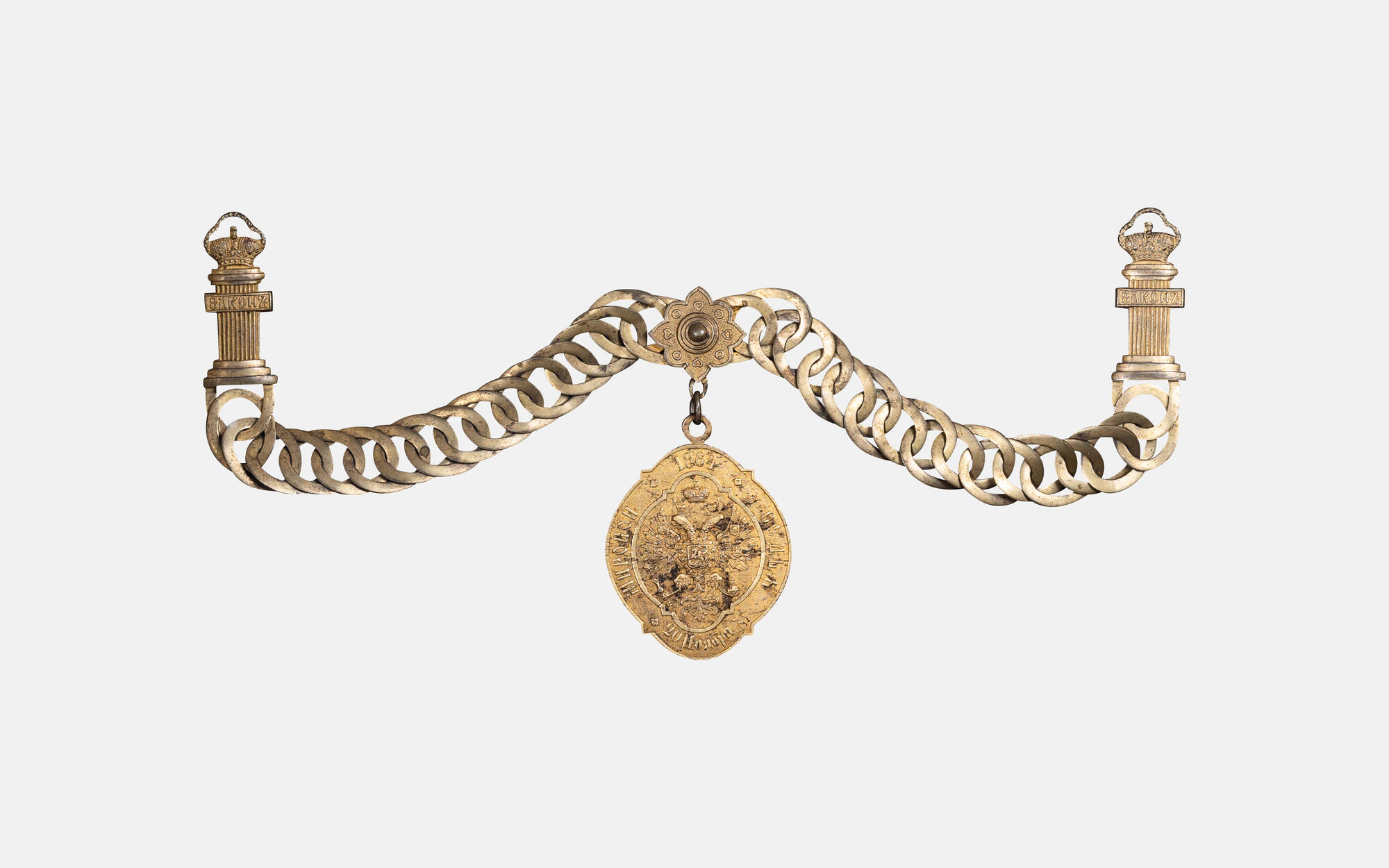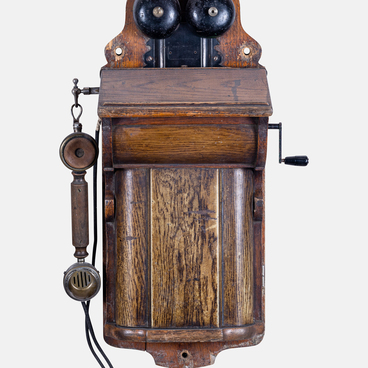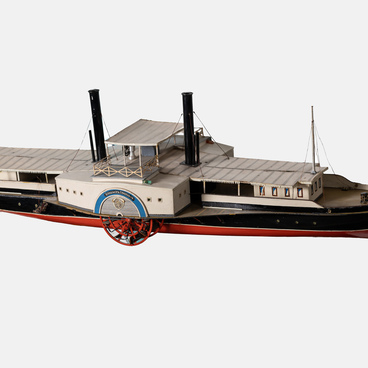The Ulyanovsk Regional Museum of Local Lore named after Ivan Goncharov presents the chain of office of the Justice of the Peace, established on December 31, 1865, by Emperor Alexander II. The insignia was made of light bronze and gilded.
The introduction of the insignia was preceded by the judicial reform of November 20, 1864, which was notable for the establishment of the institution of Justices of Peace. In terms of its social level and the social class of the people occupying it, the position of the Justice of the Peace was close to that of a peace arbitrator or a permanent representative. Magistrates’ courts were supposed to deal with minor cases and take the weight off higher-ranking courts. They did not provide for the usual procedure of a civilized court, that is, there is no court competition between the sides.
Being the middle authority between the volost and uyezd courts, the magistrates’ courts were subordinate not to the high authorities, but to the peace congress, where it was possible to appeal the decision of the justice of the peace. The Congress of Justices of the Peace met in the magistrates’ district. The magistrates’ district covered the uyezd along with the cities within it. It was divided into magistrates’ precincts. A precinct justice of the peace was elected in each magistrate’s precinct from local residents, who were at least 25 years old, had higher or secondary education and had occupied positions where they could acquire practical skills in judicial activities for at least three years. For justices of the peace, property and land qualifications were also established: they had to own land or other real estate worth at least 15,000 rubles. In cities, it had to be real estate assessed for taxation: in capitals, it had to be worth at least 6,000 rubles, in other cities — at least 3,000 rubles.
Justices of the peace were elected not by open voting, but at uyezd zemstvo meetings, and lists of those elected were sent to the Senate, where they received approval. Uyezd justices of the peace were compensated by the state. If a very wealthy landowner considered it inappropriate to take money for performing his duties, he was called an honorary justice of the peace, but essentially, he would be no different to an ordinary justice of the peace.
The displayed chain distinguished justices of peace among representatives of state power in the second half of the 19th century. Wearing it while delivering justice emphasized that the justice of peace belonged to the system of state power.


